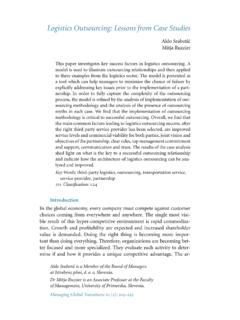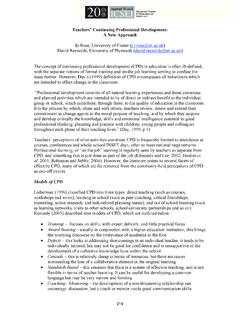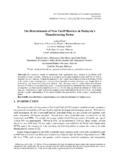Transcription of Government Expenditure and Government …
1 Government Expenditure and Government revenue The Causality on the Example of the Republic of Serbia Nemanja Lojanica University of Kragujevac, Faculty of Economics, Republic of Serbia Abstract. In the field of public finances, the issue of potential links between Government revenue and Government Expenditure has intensely attracted the attention of policy makers. On the one hand, the needs for Government investments are constantly increasing, especially in developing countries, while, on the other, the access to high Government revenues through tax collection is presents a constant difficulty due to low income per capita in these countries.
2 The main characteristic of the empirical studies conducted on this topic is that they have been performed both in developed and developing countries and that their results are divergent. One of the reasons for the inconsistency in results is that different approaches have been applied in the examinations of this relationship. The key macroeconomic imbalance in the Republic of Serbia is largely conditioned by an increasing share of fiscal deficit in GDP.
3 The fiscal deficit is the result of high public spending and the disharmonious relationship between real wage growth and gross domestic product. The effects of the budget deficit which has been present for a long period of time culminated in 2009, when it reached and exceeded the value prescribed by the Maastricht criteria. Namely, the continuous growth of the budget deficit is a source of instability and it seriously endangers the functioning of public finances in the Serbian economy.
4 The main objective of this study is to investigate the links between Government revenue and Government Expenditure in the Republic of Serbia, to indicate the measures that are necessary to reduce the budget deficit in Serbian economy. In the analysis, the monthly data from M1 2003 to M11 2014 are used. As an appropriate method for testing causality, we have used autoregressive distributed lag (ARDL), while the Granger causality has been tested within the vector error correction model (VECM).
5 The empirical results obtained in this work can be represented as follows. Testing the stationarity through the ADF and KPSS tests, it has been found that the Government revenues and the Government Expenditure are not stationary after the second difference. Namely, they are not in the line with the integration I (2). The further analysis has revealed that there is a cointegration between the variables. Also, the analysis has shown that, in the long run, there is a unidirectional causality moving from Government Expenditure towards Government revenues.
6 This result is in accordance with spend- revenue hypothesis. Based on the obtained empirical results, the political implications are that the Government expenditures should be reduced in the long run. Specifically, in the case of an increase in Government Expenditure , Government revenues should be also increased which implies an increase in tax rates. Such a situation would cause a further deterioration of the macroeconomic environment, bearing in mind all the difficulties of collecting tax revenues in Serbia.
7 Keywords: Government Expenditure , Government revenue , ARDL, VECM, the Republic of Serbia 1 Introduction Fiscal policy plays an important part in achieving macroeconomic balance. The adequate fiscal policy has been seen as a necessary instrument used to achieve sustainable growth, price stability and increase in employment in any economy. So, economic policy makers have to deal with important tasks in terms of fiscal policy adjustment and implementation. This especially applies to policy makers in developing countries.
8 In fact, such countries need to invest in infrastructure, health care, education, 79 etc. However, they do not have adequate sources of funding to cover such expenses. Specifically, tax revenues are low due to low income levels of the population. The grey economy is an additional problem since it restricts and reduces a country s capacities for generating higher tax revenues. Basically, fiscal policy can be expansionary or restrictive, and it is applied based on the objectives and the development level of a national economy.
9 For example, fiscal expansionary policy, which implies a reduction in tax rates and an increase in Government expenditures, may lead to a budget deficit at the start, but in the long run, big Government expenditures can reinforce growth. Otherwise, this hypothesis is consistent with Keynesian economic policy, which states that the budget deficit in the long run can give a positive result if the realized output of the economy in question is below the potential one.
10 A necessary condition for the establishment of an effective fiscal policy is to understand and establish appropriate links between Government revenues and Government expenditures. The main objective of this paper is to examine empirically the potential links between the two variables in the case of the Republic of Serbia for the time period from m1 2003 to m11 2014. In Serbia, a key macroeconomic imbalance and the risk associated with it result from increasing shares of public expenditures and fiscal deficit in GDP.











